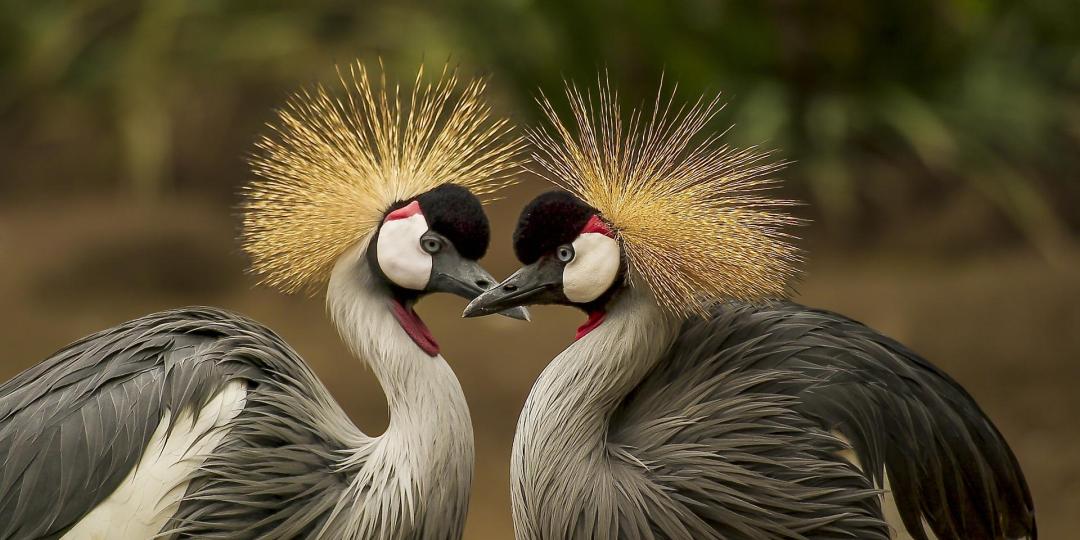The avitourism industry in southern Africa – which comprises birdwatching tour operators – is more than just a niche tourism sector. Its value has been pegged at billions of rands, and post-COVID business is booming for specialist tour operators, who are having to decline new bookings in response to staggering demand from overseas markets.
There has only been one comprehensive study on the economic value of the avitourism sector to southern Africa. In 2010, the Department of Trade and Industry found that the industry in South Africa contributed R2.25 billion (€133 million) to the economy per year.
“This equates to R4.2 billion (€250 million) in today’s currency. COVID obviously knocked this badly, but the number of tour operators in the space has grown exponentially in the decade since the study, so there is certainly immense value in the industry and still huge opportunities for growth,” says Andrew de Blocq, BirdLife South Africa’s Avitourism Project Manager.
De Blocq says avitourism is thriving post-COVID; he is aware of at least three southern Africa birding tour companies that simply cannot keep up with the demand.
One of these is Mauritius-based Rockjumper Birding Tours, which offers 300-400 tours per year in 150 destinations around the world, including in 13 southern and East African countries.
“With the dropping of COVID restrictions and the resumption of operations, we simply can’t keep up with the demand for tours to southern Africa. Our weekly booking stats are at an unparalleled high and the growth curve exceeds all other years. It’s a good problem to have,” says Dr Daniel Danckwerts, Manager of tailor-made tours at Rockjumper.
Danckwerts highlights that 60-70% of the demand comes from the US, followed by the United Kingdom, Continental Europe and Australasia.
“We have also seen a definite shift in travel preferences, with clients moving slightly away from our scheduled tours and more towards our tailor-made offerings, despite the higher cost. Post-COVID, clients want to travel with people they know and who they feel safe with, and they want more personalised experiences where they are able to target the bird species they want to see,” Danckwerts adds.
Capitalising on ‘incredible potential’
Southern Africa is a world-renowned birdwatching destination, boasting over 1 000 species, but its potential is yet to be fully realised.
“Marketing of safari destinations is still structured almost entirely around the Big Five. Although there has been a progressive and ongoing effort to grow the industry, we foresee a massive opportunity to further tap into the incredible potential offered by avitourism. There is certainly a demand for it,” Danckwerts says.
Birdlife South Africa has been channelling concerted investment into its avitourism activities, recently launching the GoBirding portal, a ‘one-stop shop’ that provides comprehensive information on more than 500 birding sites in South Africa.

“The information available there is enough for inbound tourists to plan an entire holiday on their own, or for tour operators to do similarly. It is also a tool to show potential visitors just how much of a diversity of places there are to visit: there’s no way that 500 different places to go birding in one country can’t be exciting!” says De Blocq.
SATSA, southern Africa’s largest membership-based inbound tourism organisation, is placing increased emphasis on partnering with BirdLife and tour operators to promote avitourism as an exciting growth sector.
“Niche tourism sectors are an excellent way to differentiate the South African offering and we see great synergies from a marketing and destination positioning point between SATSA, BirdLife, tour operators/DMCs and then of course the product on the ground offering the birding,” says Hannelie du Toit, Chief Operating Officer of SATSA.
“We have not placed enough focus on avitourism, but with platforms like GoBirding this is starting to change. I see it very much a win/win – it exposes birding destinations to existing birders, and through the destinations becoming more bird friendly, it brings the wonder of birding to new enthusiasts,” Du Toit concludes.























